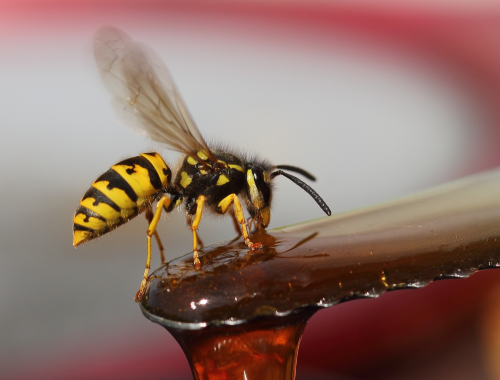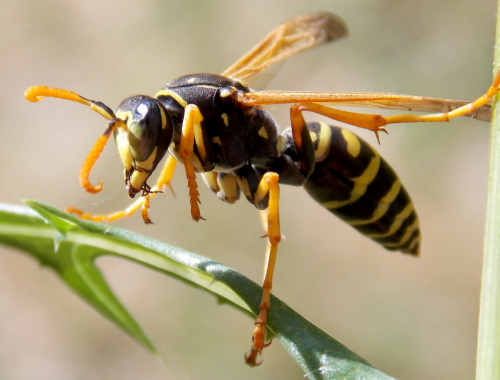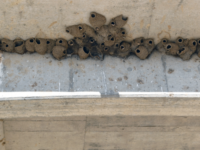It’s very easy to tell the difference between a cat and a dog. However, the difference between certain other animals is not as obvious, which is why they are so easily confused. For example, the infamous social wasps known commonly as yellow jackets are often confused with wasps that are known to sting. Well, both are insects known for their painful stings and it can be hard to tell them apart without looking closely. Although yellow jackets are smaller than other wasps, it’s difficult for the average person to tell the difference. We look at the similarities between yellow jacket and wasp.

What is a yellow jacket?
Yellow jacket, also called yellowjacket, is a predatory insect similar to bees and belongs to the family ‘Vespidae’ and genus ‘Vespula’ or ‘Dolichovespula.’ Yellow jackets are common in North America but also found in other parts of the world. They are typically yellow and black in color, and usually hand around trash cans. They are part of an important group of creatures called scavengers – animals that feed on dead animals or rotting plant matter.
Yellow jackets are aggressive wasps that live in colonies that are typically constructed in underground nests, tree stumps, or other sheltered areas. A queen leads the colony and lays the eggs that produce workers and reproductive males. The workers are in charge of gathering food, caring for the young, and defending the nest. They feed on a variety of insects, spiders and other small animals.

What is a wasp?
Wasp is a common social winged insect known for its sting. Wasps are often confused with bees as they belong to a suborder called ‘Apocrita.’ A suborder is a group within an order that has a lot in common. A wasp has similar yellow and black stripes on the body and a more clearly defined waist. Wasps have a head with two compound eyes, two antennae, and a mouth. However, there are many species of wasps which have entirely different coloring, such as the green hornet.
Most wasp species are solitary and non-aggressive, but some, like yellow jackets and hornets, are social and can be dangerous if their nests are disturbed. They usually live in hot or warm places. Most wasps are solitary meaning they spend their lives alone. Females typically build the nests. Although sometimes dangerous, wasps are important predators that play a vital role in controlling pest populations.
Similarities between yellow jacket and wasp
- Physical Characteristics – Yellow jackets are predatory insects similar to wasps as they share similar physical characteristics. Both yellow jacket and wasp have slender body with similar yellow and black stripes. Both have a head and two compound eyes that allow them to detect movement and locate their prey. The face is primarily yellow with dark eyes, and the body is smooth and elongated. Both have two pairs of wings and a stinger that painfully stings.
- Behavior – Both yellow jackets and wasps are social insects known for their aggressive nature. They become hostile, particularly when they sense threat to their food sources or their colony, and they will sting to protect themselves. Both are feisty creatures that can sting repeatedly and painfully. Yellow jackets, however, can be more aggressive when threatened.
- Shelter – Both live in colonies, typically inside walls or in other enclosed spaces. Yellow jackets tend to build underground nests, which are usually not visible, while wasps build open comb nests that are easily visible. Besides that, both lay eggs in their nest. The nest is built out of what we call paper. It is made out of wood fibers and is pretty thin.
- Ecological Significance – Both yellow jackets and other social wasps are extremely important in controlling crop and garden pests. Some are pollinators, which mean they help plants spread their pollen and fertilize their seeds so that they can reproduce. They are also an important food source for many other animals, including birds and mammals. Both are beneficial insects because they feed on caterpillars and harmful flies.
Summary
In a nutshell, yellow jackets are a kind of aggressive wasp, so they share many similarities in terms of physical characteristics, behavior, and ecological significance. Both are social creatures known for their painful stings and it can be hard to tell them apart without looking closely. Both have large compound eyes which give them better vision than humans. They do not have bones in their body. They lay eggs, though their ways of doing it vary from species to species.
FAQs
Are wasps and yellow jackets the same thing?
While yellow jackets are a kind of aggressive wasp, they are not exactly the same thing. There are many different species of wasps, including yellow jackets, paper wasps, and hornets.
How do you compare yellow jackets and hornets?
Hornets are typically larger and tend to be black or brown in color with yellow markings. Hornets are native to Europe whereas yellow jackets are commonly found in North America. Hornets build their nests in trees and other high-rise places whereas yellow jackets build their nests underground.
Are yellow jackets more aggressive than wasps?
Yellow jackets typically are more aggressive and they tend to be aggressive when their nests are threatened, and they can be more persistent in their attacks than other wasps.
What wasp looks like a yellow jacket?
There are many species of wasps that look similar to yellow jackets, such as paper wasps and some hornet species. One great example is the baldfaced hornet, which is black and white in color and builds a distinctive large paper nest.
Why are yellow jacket stings so painful?
The venom injected by the stinger contains toxins that cause pain and inflammation. This is the reason why yellow jacket stings are so painful. Yellow jackets can also sting repeatedly, exacerbating the pain.
Should I destroy a yellow jacket nest?
It is usually best to have a professional pest control service remove a yellow jacket nest, especially if the nest is in a sensitive area that is hard to reach. It can be a bit risky to do it on your own.
Which wasp has the worst sting?
The tarantula hawk wasp has one of the most painful stings of any insect, with a sensation similar to being electrocuted. This wasp, however, is not typically aggressive toward humans and will only sting if provoked.
What looks like a yellow jacket but it isn’t?
There are many insects that look similar to yellow jackets but are not actually wasps, such as hoverflies, robber flies, and certain species of bees.
Do yellow jackets leave a stinger?
Yes, yellow jackets, like all other wasps, have a stinger which contains venom. When bit, the stinger is left behind and it continues to inject the venom into the victim.











Leave a Reply